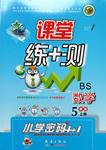
A higher reading rate, with no loss of comprehension (理解), will help you in other subjects as well as in English, and the general principle (原则) apply to any language. Naturally, you will not read every book at the same speed. You would expect to read a newspaper, for example, much more rapidly than a physics or economics textbook—but you can raise your average reading speed over the whole range of materials you wish to cover so that the percentage (百分比) gained will be the same whatever kind of reading you are concerned (有关的) with.
The reading passages which follow are all of an average level of difficulty for your stage of instruction. They are all about five hundred words long. They are about topics of general interest which do not require a great deal of specialized knowledge. Thus they fall between the kind of reading you might find in your textbooks and the much less demanding kind you will find in a newspaper or light novel. If you read this kind of English, with understanding at four hundred words per minute, you night skim (浏览) through a newspaper at perhaps 650-700, while with difficult textbooks you might drop to two hundred or two hundred and fifty.
Perhaps you would like to know what reading speeds are common among native English-speaking university students and how those speeds can be improved. Tests in Minnesota, U.S.A., for example, have shown that students without special training can read English of average difficulty, for example, Tolstoy’s War and Peace in translation, at speeds of between 240 and 250 words per minute with about seventy percent comprehension. Students in Minnesota claim (自称) that after twelve half-hour lessons, once a week, the reading speed can be increased, with no loss of comprehension, to around five hundred words per minute.
1.According to the passage, the purpose of effective reading with higher speed is most likely to help you .
A. only in your reading of physics textbook
B. improve your understanding of an economics textbook
C. not only in your language study but also in other subjects
D. choose the suitable material to read
2.Which of the following does not describe the types of reading materials mentioned in the second paragraph?
A. Those beyond (超越) one’s reading comprehension.
B. Those concerned with common knowledge.
C. Those without the demand for specialized knowledge.
D. Those with the length of about five hundred words
3.The average speed of untrained native speakers in the University of Minnesota is .
A. about three hundred words per minute
B. about two hundred and forty-five words per minute
C. about sixty words per minute
D. about five hundred words per minute
4.According to the passage, how fast can you expect to read after you have attended twelve half-hour lessons in the University of Minnesota?
A. You can increase your reading speed by three times.
B. No real increase in reading speed can be achieved.
C. You can increase your reading speed by four times.
D. You can double your reading speed.
5.Where do you think the passage is taken from?
A. The introduction to a book on fast reading.
B. A local newspaper for young people.
C. A school newspaper run by students.
D. The introduction to an English textbook.
| 1、从短文第一节第一句可以看出:快速、高效的阅读不仅有助于语言的学习,而且对于其他科目的学习同样有益,题干中的effective reading 相当于文中的with no loss of comprehension的意思。
2、此题材针对第二节,即阅读材料问题。 3、Tests in Minnesota, U.S.A., for example, have shown that students without special training can read English of average difficulty, for example, Tolstoy’s War and Peace in translation, at speeds of between 240 and 250 words per minute with about seventy percent comprehension.根据这几句可知,本题选B。 4、3和4两题针对短文第三节,即训练前后果的阅读速度。 5、因为本文是介绍阅读的,那么很可能是节选自A。
|


 红果子三级测试卷系列答案
红果子三级测试卷系列答案 课堂练加测系列答案
课堂练加测系列答案科目:高中英语 来源:设计必修一英语外研 题型:050
| |||||||||||||||||||||||||||||||||||||||||||||
查看答案和解析>>
科目:高中英语 来源:高考真题 题型:阅读理解
查看答案和解析>>
科目:高中英语 来源:0117 月考题 题型:阅读理解
查看答案和解析>>
科目:高中英语 来源:0103 期中题 题型:阅读理解
查看答案和解析>>
科目:高中英语 来源:0118 期中题 题型:阅读理解
查看答案和解析>>
湖北省互联网违法和不良信息举报平台 | 网上有害信息举报专区 | 电信诈骗举报专区 | 涉历史虚无主义有害信息举报专区 | 涉企侵权举报专区
违法和不良信息举报电话:027-86699610 举报邮箱:58377363@163.com